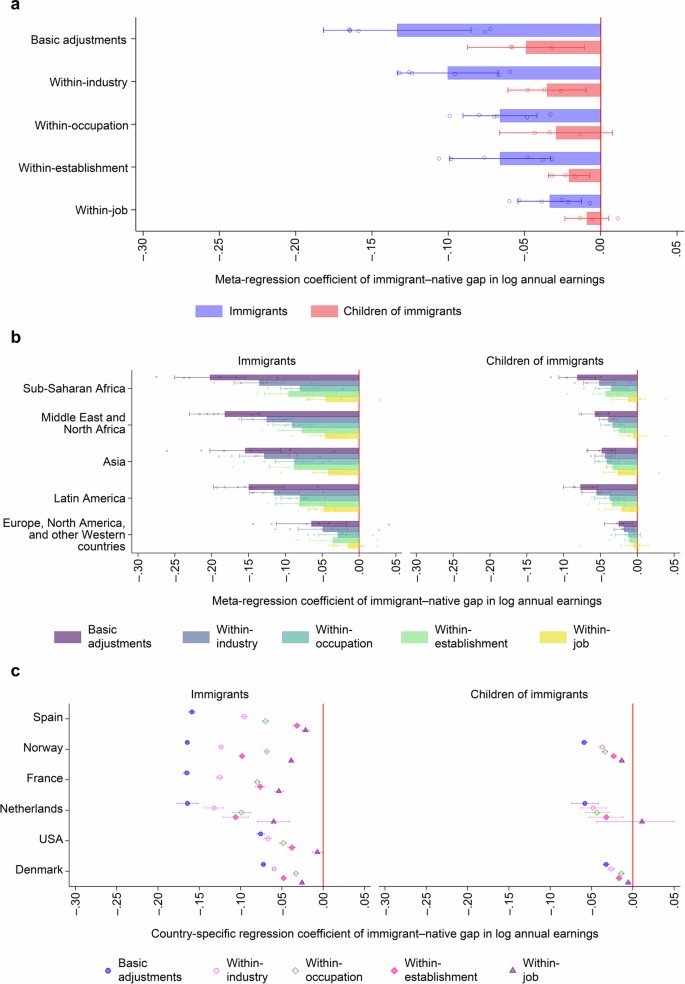
Immigrant–native pay gap driven by lack of access
to high-paying jobs
Are Skeie Hermansen, Andrew Penner, István Boza, Marta M. Elvira, Olivier Godechot, Martin Hällsten, Lasse Folke Henriksen, Feng Hou, Zoltán Lippényi, Trond Petersen, Malte Reichelt, Halil Sabanci, Mirna Safi, Donald Tomaskovic-Devey & Erik Vickstrom
Nature – Published:
Abstract
Immigrants to high-income countries often face considerable and persistent difficulties in the labour market, whereas their native-born children typically experience economic progress. However, little is known about the extent to which these immigrant–native earnings differences stem from unequal pay when doing the same work for the same employer versus labour market processes that sort immigrants into lower-paid jobs. Here, using data from nine European and North American countries, we show that the segregation of workers with immigrant backgrounds into lower-paying jobs accounts for about three-quarters of overall immigrant–native earnings differences.  Although within-job pay inequality remains notable for immigrants in several countries, our results demonstrate that unequal access to higher-paying jobs is the primary driver of the immigrant–native pay gap across a range of institutionally and demographically diverse contexts. These findings highlight the importance of policies aimed at reducing between-job segregation, such as language training, job training, job search assistance programmes, improving access to domestic education, recognizing foreign qualifications, and settlement programmes aimed at enhancing access to job-relevant information and networks. Policies that target employer bias in hiring and promotion decisions are also likely to be effective, whereas measures aimed at ensuring equal pay for equal work may have more limited scope for further progress in closing the immigrant–native pay gap.
Although within-job pay inequality remains notable for immigrants in several countries, our results demonstrate that unequal access to higher-paying jobs is the primary driver of the immigrant–native pay gap across a range of institutionally and demographically diverse contexts. These findings highlight the importance of policies aimed at reducing between-job segregation, such as language training, job training, job search assistance programmes, improving access to domestic education, recognizing foreign qualifications, and settlement programmes aimed at enhancing access to job-relevant information and networks. Policies that target employer bias in hiring and promotion decisions are also likely to be effective, whereas measures aimed at ensuring equal pay for equal work may have more limited scope for further progress in closing the immigrant–native pay gap.
Download PDF


